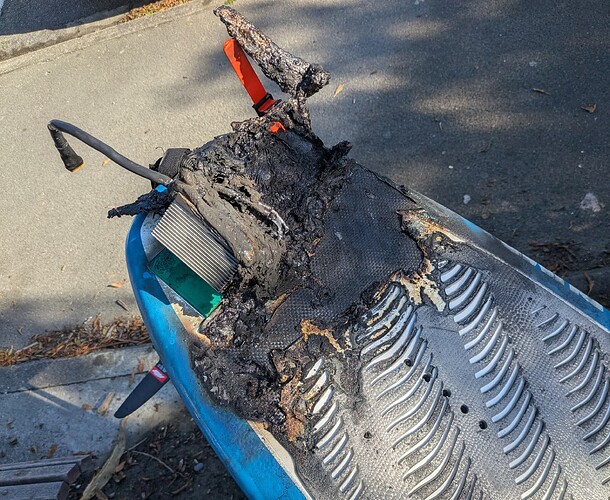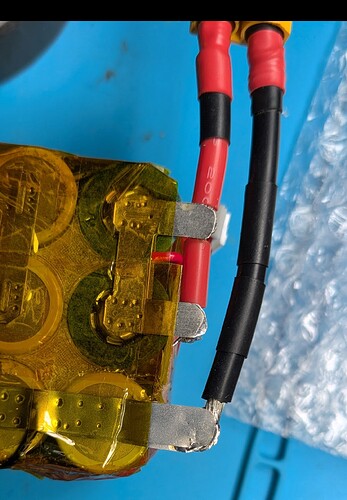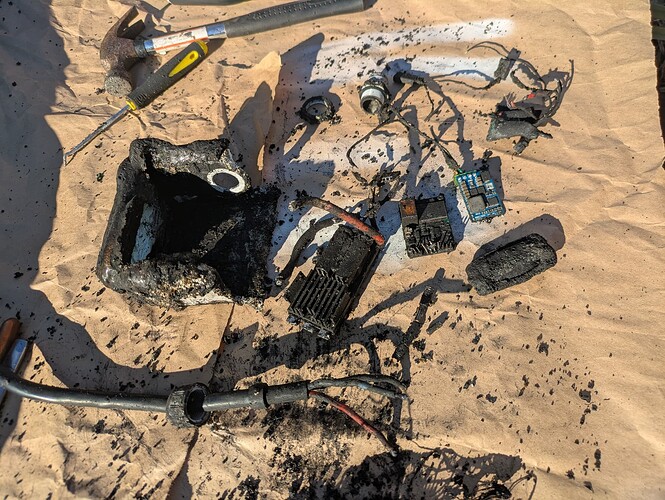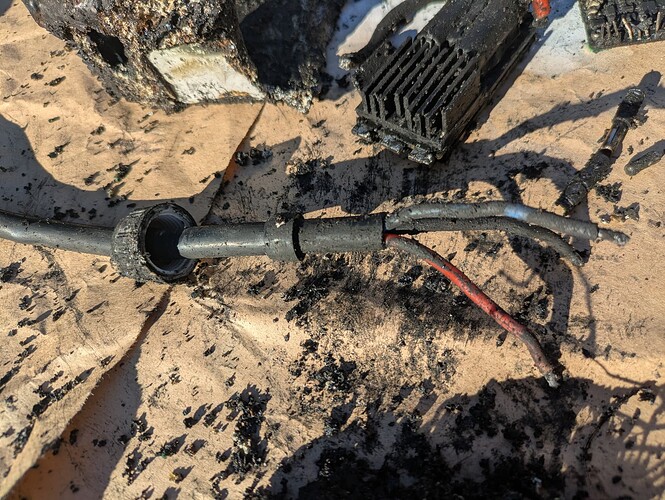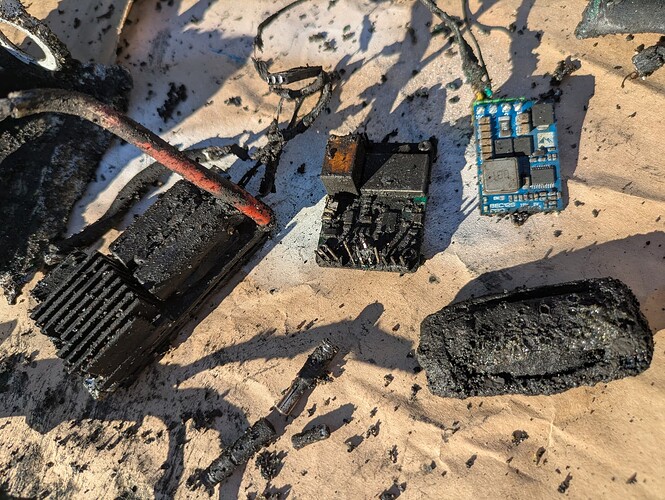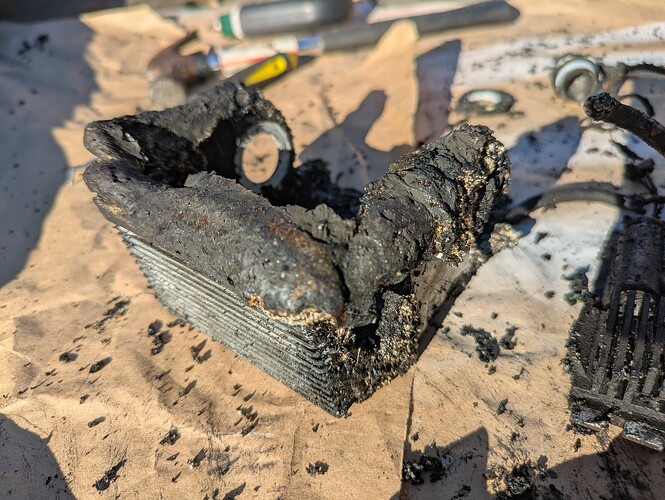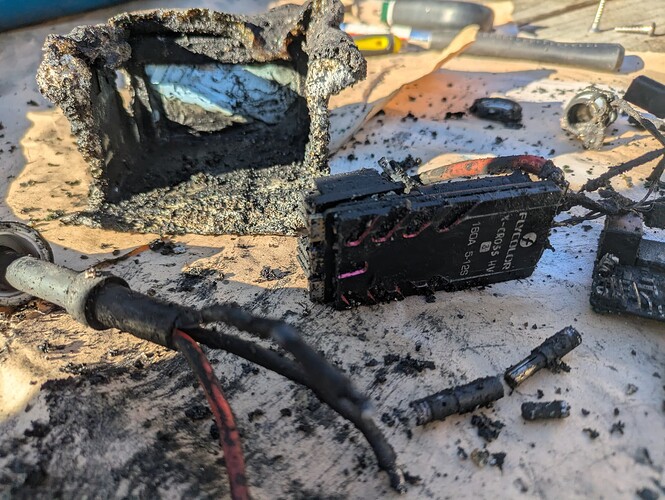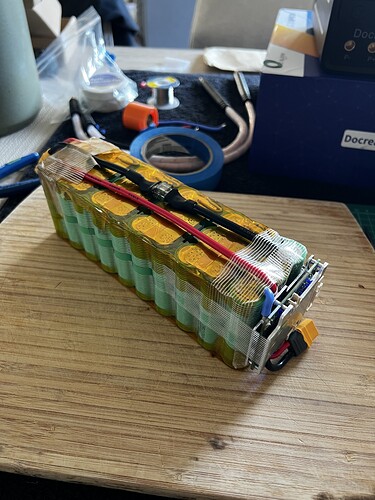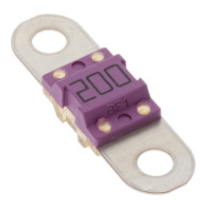This is a post I don’t really want to write but in the interests of safety and learnings for everyone I think I should. My Foil Assist caught fire during a session out on the water. I think it helps to think about what you would do in my situation so you don’t panic if it happens to you.
I made a foil assist lunchbox style with the following:
- 12S2P battery in 3x8 config, XT90 anti-spark (Assembled myself using used Murata VTC6A cells), welded 0.2mm pure nickel at least 8mm wide. BMS on charge only, No fuse.
- Hibox 1027 enclosure (now rebranded as BUD Industries 32408)
- Flycolour x-cross 160A ESC with external aluminum heatsink
- Mateksys BEC Pro
- Maytech V2 Remote and Rx
- Aliexpress voltage display
- Flipsky 6384 waterproof motor integrated into Axis aluminum mast.
I had everything working well and had a few good sessions in very small swells, but had to reconnect a battery cable to the ESC after it had pulled off (not de-soldered) during an earlier session. Then last week I went out and was in a hurry to get in a quick session, had a fully charged battery and assembled all my kit and closed lid without really doing any checking of cables getting caught in the box seal etc.
I motored out slowly through the small swell until I was beyond the breakers then on my second take-off I nose dived and I came off. I heard a popping sound, then I saw smoke, then the box turned orange and a flame found it’s way out of a hole that it had burned through the enclosure. It wasn’t like a jet of flame, just a flame. At this point, I was watching this happen about 2m away from board just, I was floating in the water. I really didn’t know what would happen next so I swam about 10m away to keep myself safe. I’m not going to be dramatic and say that it exploded, because it didn’t, it just slowly increased in intensity for about 30 seconds then stabilized and just burned like a well fueled campfire, though with very thick black smoke. After about 5 mins it seemed settled so I swam over and flipped the board which put the fire out. I left it like that and dragged it back into shore. When I got to shore the battery pack was gone, must have fallen out through the burnt box.
The fire department turned up but didn’t stay for long, and unfortunately the local newspaper also posted a few sentences about the event, so it got way more attention than it deserved!
I studied the leftovers (photos below) and here is what I think happened. The battery pack configuration has the +ve and -ve terminals right next to each other, like this. The method I used to connect the pack to the power cable was to leave overhanging nickel strip which I soldered the cable to (soldered first, spot welded second). Due to the very tight fit I had to run the -ve cable along the line of the +ve cable. Hard to explain but like this as shown below (this is a different battery no longer in service), then taped up with Kapton tape, used fish paper to separate what I could, then wrapped the whole thing in fish paper and heat shrink.
This was my first built so my soldering skills started pretty badly, I also pre-tinned the power cables very heavily, so much so that the solder went about 5-10mm up the cable which prevents it from being flexible. An 8x3 21700 battery format in that enclosure is very tight, and I think each time I closed the lid, there was a lot of tension on the battery cables, and every time I bumped it or closed the lid again, the solder and/or the overhanging nickel strip would have weakened to the point where something became disconnected and, because the terminals were so close together, created a battery short circuit with no BMS or fuse to prevent a thermal runaway battery fire. I don’t think it was an ESC issue.
What I would have done differently?
During the event, I could have simply dived under the water and flipped my board from under the water, which would have kept me safe and also possibly prevented further damage to the other components and my board. Another part of that is no one would have noticed, which to me is a much better outcome ![]() . BUT If I had acted faster and extinguished quickly then I would have been left with a semi-burnt battery which was surrounded by saltwater, and still possibly a loose connection somewhere, so it could have re-ignited and been a risk (in this case I would leave it on the sand and keep people away).
. BUT If I had acted faster and extinguished quickly then I would have been left with a semi-burnt battery which was surrounded by saltwater, and still possibly a loose connection somewhere, so it could have re-ignited and been a risk (in this case I would leave it on the sand and keep people away).
Other things I should have done before the session is check the stiffness of all the larger wire soldered connections to make sure nothing was wiggly or loose, and also taken more care when closing the box, because it is also possible that it was a saltwater leak which caused the fire. Keeping the silicon wires more flexible by not going crazy on pre-tinning may have helped in this case, or simply using a larger enclosure so I didn’t have to force everything into such a small space.
I’m keen to hear any feedback on this, and also your opinions on what may have caused it, what I should or could have done to prevent things like this happening again.
But please, I already feel like an idiot because of this, so you don’t need to tell me that in your replies ![]()
![]()

